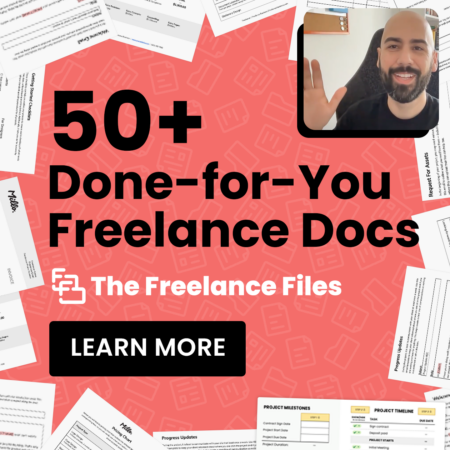If you work at a large corporation, they design and print your business card for you, so it’s likely that you’ve never had to think about the information that is printed on them.
Blogger business cards are different.
As a solopreneur, you are responsible for everything from start to finish. The color, paper, font choice, and all the text are completely up to you. Do not let this intimidate you or keep you from creating the kind of blogger business cards you want. In fact, putting together a business card can be fun and rewarding!
At a minimum, your blogger business card should include the following information:
1. Your logo
Unless you are a professional designer, you should probably outsource your logo design. It’s about so much more than just a nice image. Your logo needs to be easy to see in a smaller format, and it needs to make sense with your brand.

2. The name of your blog
For some bloggers, the blog name and your own name might be the same. Just make sure that it’s clear what the blog is called––the name should either be incorporated into the logo, or should be a large, bold font.
3. Your name
The people you hand out blogger business cards to need to remember who they spoke with, and need to know how to address you if they choose to contact you.
4. Job title
You might feel silly giving yourself a title, but this detail can really set you apart from other bloggers. You can choose to call yourself simply, “Blogger,” or you can call yourself “Founder,” “Creator,” or, if you have incorporated your blog as a business, you might be the “CEO.”
Others go a more creative route, styling themselves as “Evangelists” of whatever topic they write about, or “Chief Problem Solver,” or something similar. Your title can also be specific to your blog niche, like “Home Guru,” or “Food Critic.” The simplest title of all might be “Editor.” The choice is completely up to you, but don’t skip this part. Just choose a title that is true to who you are and what you do.
5. URL
Nearly all business cards have a website listed, but for blogger business cards, this should be one of the dominant features. After all, the URL is your business. Make sure this is easy to read. You may even want to create a scannable QR code so that people don’t have to type in a lengthy website address.
6. Contact information
Make sure people can get a hold of you! You don’t need to give out your personal address, but at minimum you need a business email address and a phone number people can use to contact you. You can also list a prefered way to receive messages if you choose, like, “Text @ 555-555-5555.”
If you don’t always pick up the phone or don’t think you will be able to return calls in a prompt manner, I wouldn’t include that information. Whatever contact info you use, make sure it truly is a good way to get your attention.
7. Tagline
This is optional, but having a catchy, 3-5 word description of your blog can jog people’s memory when they are reviewing your blogger business cards later. For example, the blog SEO Book has the tagline: “Learn. Rank. Dominate.” It’s simple, concise and tells you something about their blog instantly.
There are other things you can include on blogger business cards, but remember, you are generally dealing with a 2”x3” space. Anything that isn’t adding real value to the business card doesn’t need to be there. This is not the place to tell your life story or list skills and experience. This is a snapshot of who you are, what you do, and an invitation for people to find out more.
